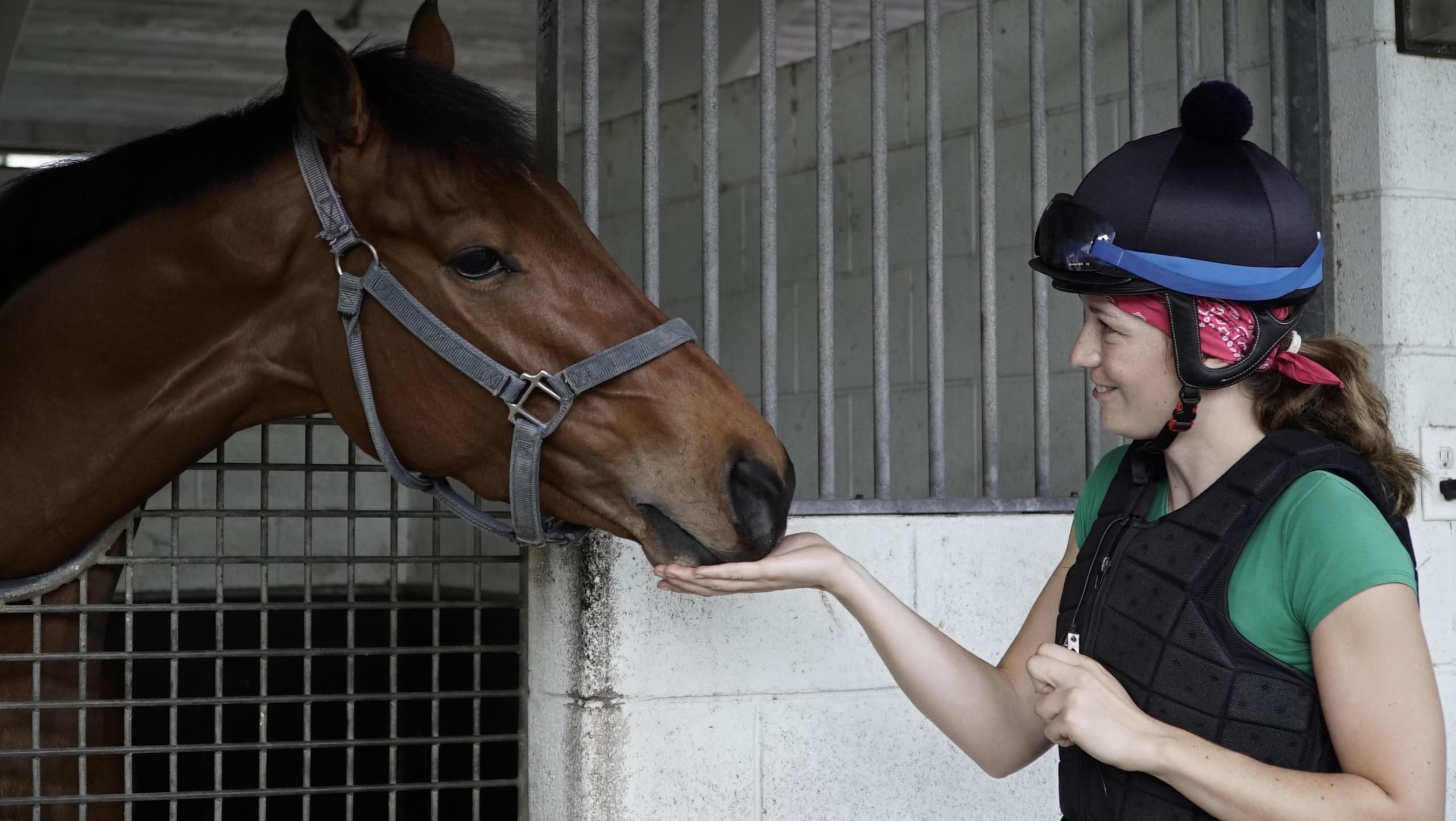Horses and children can make a great pair. Introducing kids to riding can expand their horizons, help them learn to bond with animals, engage with their instincts and teach them how to care for another creature. If you think your little one might enjoy learning to ride, it’s important to take safety into consideration, as well as fun. With the proper instruction and care, kids can learn to love horses and gain life lessons along the way. Here are a few tips on how to keep children safe around large animals:
Set a good example
Children learn from the adults around them. At home, in the classroom and at the farm or equestrian center, kids instinctively look to the adults in their presence for guidance. So when you’re with your child introducing them to a large animal for the first few times, show them how you move around the animal safely, giving the horse enough distance to avoid kicking injuries, speaking in a calming voice, avoiding shouting and treating horses with respect.
You’ll likely need to correct a child’s behavior around equines in the early stages, but if they’re watching you interact safely with a horse, they’ll be more likely to do the same. One of the best lessons you can teach a child is to trust their instructor – listen attentively while a teacher guides children through their lessons, and encourage your child to watch closely as more experienced kids mount and care for their horses.
Communicate clearly with kids
If a child has never interacted with horses, they’ll need lots of instruction. Don’t leave anything up to their judgment at first. Instead, communicate clearly and effectively with your child regarding equine safety as well as how horses tend to react to certain behavior.
For example, communicate that running or shouting in the presence of the horse may spook the animal and put others in danger. Also communicate that horses are generally friendly toward humans and that if they act in an appropriate manner and stay alert, the child doesn’t have to be afraid.
Teach kids the essentials
Teach children to speak in a firm but gentle voice, how to use the reins and not to run or abruptly turn away from a horse.
Be sure to tell instructors that your child is new to riding so they know to pay more attention. For that matter, you may want to be present during your child’s first ride or two. Before signing up your kid for eight weeks of lessons, accompany them on a ride with an instructor present down a beginner’s trail.
During this first informal lesson, let the instructor teach your child safety measures, how to properly sit on a saddle, how to hold the reins and all the other basics. Then during the ride, while you’re on a horse next to them, you can correct any improper behavior you may see and encourage your kid to have fun and enjoy the ride. This is also a good time to gauge whether they’re up for a full range of lessons yet, or if you’d rather accompany them on a few more rides before handing them off to an instructor for formal lessons.
Other lessons include how to approach a horse – always at the shoulder, and not directly to the their face, which is a blind spot. You should also teach a child the power dynamics between horses and humans. As children, they’re not generally used to being in charge, but when riding, the human should always take the lead. Teach children to speak in a firm but gentle voice, how to use the reins and not to run or abruptly turn away from a horse.
Practice safety during grooming
The riding and safety lessons don’t end the moment a child dismounts. Caring for an animal is essential to learning how to interact fully with these animals, and provides for great opportunities to teach safety and responsibility. Grooming, from rubbing down the horse with shampoo to guiding them to water, removing a saddle and cleaning out its hooves, all require patience and focus. However, there are still safety risks that all people face around horses even when out of the saddle.
It’s important to learn how to properly groom before launching in and trying to grab a horse’s hoof. Perhaps the biggest lesson to be learned during this time is to never stand directly behind a horse lest you get kicked. Urge your children to pay close attention to instructors as they guide them through grooming courses. Also be sure to communicate with children that even though horses are large, they can be hurt by rough treatment, so grooming should be conducted with a firm but gentle hand.
Encourage confidence
Confidence is key for anyone interacting with horses, but be patient with your child if they show apprehension their first few times at the equestrian center. After all, horses are large animals, and appear even larger to young children. One way to encourage confidence among children is to start them out by riding an appropriate sized horse. A pony may be a better size for a young child.
You can also help a child gain confidence around horses by allowing them to feed a horse a sugar cube or other treat to show kids how gentle these animals can be. The best way for children to gain confidence around horses is to safely interact with them over time, always abiding by important safety rules. Find a good instructor to take your child from a riding novice to an experienced equestrian who may one day be able to saddle their own horse, groom and care for them, and ride a horse with certainty.








